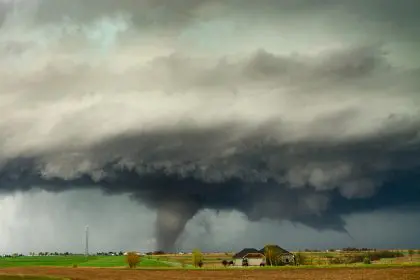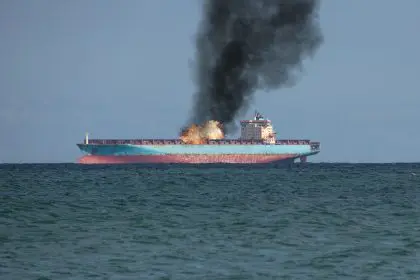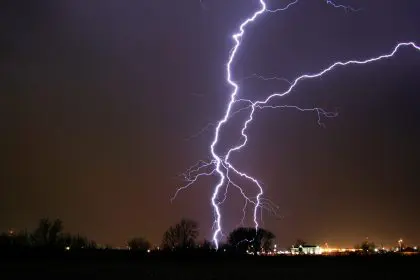A dangerous weather system drenched the Philadelphia metropolitan area Wednesday, triggering a series of escalating alerts from the National Weather Service. The heavy rainfall initially prompted flash flood warnings across northwestern Philadelphia, east-central Montgomery County, southeastern Bucks County, north-central Camden County, and northwestern Burlington County until 4:15 p.m.
While those immediate flash flood concerns have subsided, the threat has transformed rather than disappeared. Weather officials have now issued a coastal flood advisory covering Philadelphia County, Delaware County, Gloucester County, Camden County, lower Bucks County and northern Burlington County from 2 to 7 a.m. ET Thursday.
This overnight advisory signals continued danger for residents in flood-prone areas, particularly those near tidal waterways and shorelines where up to six inches of standing water may accumulate. The transition from flash to coastal flooding highlights the complex weather patterns affecting the region.
Expanded impact zone reaches across state lines
Weather officials emphasized that flooding impacts extend beyond the specifically named advisory areas. Major population centers throughout the region faced potential flooding conditions during Wednesday’s rainfall, including Philadelphia, Trenton, Camden, Cherry Hill, Bensalem, Evesham, Mount Laurel, Ewing, Willingboro, Voorhees, Medford and Lumberton.
This widespread threat area crosses state boundaries, affecting communities in Pennsylvania, New Jersey, and Delaware. The regional nature of the flooding illustrates how weather emergencies often disregard political boundaries, requiring coordinated responses across multiple jurisdictions.
Residents throughout the Delaware Valley should remain alert to changing conditions, regardless of whether their specific location appears in official advisories. Local terrain, drainage systems, and proximity to water features can create flooding risks even in areas not explicitly mentioned in weather alerts.
Timing makes overnight coastal flooding particularly hazardous
The transition to a coastal flood advisory comes with unique dangers due to its overnight timing. Flooding that occurs between 2 and 7 a.m. presents special challenges for emergency response and resident safety.
Darkness makes floodwaters substantially more dangerous, as drivers and pedestrians may not see standing water until they’ve already entered it. The overnight timing also means many residents will be asleep when waters begin rising, potentially reducing reaction time if evacuation becomes necessary.
Emergency management officials recommend that residents in vulnerable areas set weather alerts on their phones and keep devices charged and unmuted overnight. Having emergency supplies readily accessible near sleeping areas can save crucial minutes if nighttime evacuation becomes necessary.
Tidal influences compound rainfall effects
The coastal flood advisory specifically addresses concerns about tidal waterways, highlighting how astronomical forces can compound weather-related flooding. Even as rainfall subsides, high tides can push water inland through rivers, streams, and drainage systems.
The Delaware River and its tributaries become particularly vulnerable during these conditions, as tidal effects can extend many miles upstream. Areas that appeared safe during the height of rainfall may experience flooding hours later as tidal cycles push water into low-lying regions.
This combination of heavy rainfall and tidal influences exemplifies the complex nature of flooding events in the Philadelphia region. Understanding these dynamics helps residents anticipate potential risks even after visible rainfall has ended.
Infrastructure challenges magnify flood threats
Philadelphia’s aging infrastructure adds another dimension to flooding concerns. The city’s combined sewer system, parts of which date back more than a century, can become overwhelmed during intense rainfall events, leading to backed-up drains and localized flooding even in areas away from waterways.
Suburban communities face different but equally challenging conditions. Increasing development has reduced natural drainage areas, while climate changes have intensified rainfall patterns. These factors create flooding risks in locations that historically remained dry during storms.
Municipal efforts to upgrade stormwater management systems continue throughout the region, but these long-term projects offer little immediate relief during current flooding events. Residents must therefore take personal precautions rather than relying solely on infrastructure improvements.
From response to recovery: what happens after waters recede
As flooding events subside, residents face a new set of challenges during recovery. Water damage can create structural issues, electrical hazards, and mold growth in affected buildings. Proper cleaning and remediation become essential to prevent long-term property damage and health concerns.
Documentation plays a crucial role in recovery efforts. Residents should photograph damage before beginning cleanup for insurance purposes. Keeping receipts for all expenses related to flood recovery may help with reimbursement claims through insurance or disaster assistance programs.
Local emergency management offices often provide guidance on safe cleanup procedures following flooding events. Following these recommendations helps prevent injuries and illness during the recovery process.
Preparing for future flooding events
The current situation offers an important reminder about flood preparedness for all Philadelphia area residents. Creating household emergency plans, assembling supply kits, and reviewing insurance coverage for flood damage represent essential steps before the next weather emergency occurs.
Community-level preparation also makes a significant difference in flood outcomes. Participating in neighborhood emergency planning, supporting infrastructure improvements, and advocating for development practices that reduce flood risks all contribute to community resilience.
As weather patterns continue evolving across the region, the importance of flood preparation becomes increasingly critical for Philadelphia area communities. Implementing lessons learned from current events improves readiness for future flooding scenarios.













